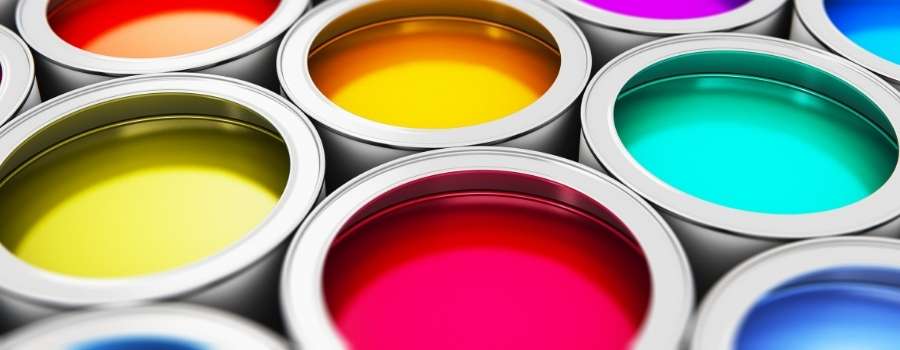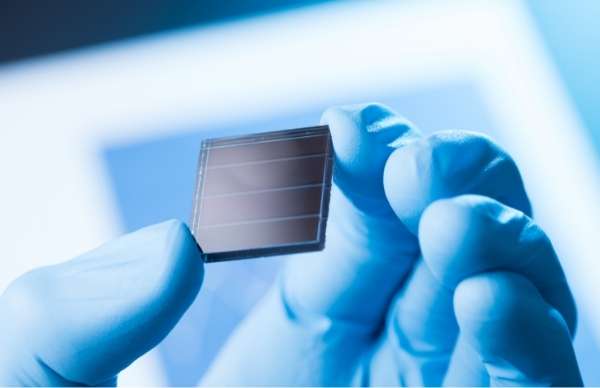
For decades, solar innovators have been looking for ways to use more of a home or businesses structure as a means for solar application.
We already see solar panels on rooftops and other innovations in solar energy being developed and tested with one of the most intriguing being solar paint. The idea is that in just a few coats you turn your entire house into a source of renewable energy.
What Is Solar Paint?
Solar paint, also known as photovoltaic paint, is a solar cell in liquid form. The paint can be applied to any conductive surface like metal or glass. Once dried, the solar paint creates an invisible solar cell on that surface that can capture sunlight and convert it into electricity.
Solar paint is designed to be like standard paint, but with hundreds of millions of solar cells mixed in. When the paint dried it will have the appearance of any other brand of house paint, but when then be able to provide photovoltaic (solar power) properties.
This can be a game-changer for residential solar, as it adds a new method for providing solar energy to your home without the expense and…sometimes negatively perceived…aesthetic of solar panels.
Installation and upkeep would be a lot simpler too since all you would need to do is paint it on like any standard house paint…no more climbing up onto your roof and dealing with heavy, cumbersome solar panels!
What Can Solar Paint Be Used For?
In general, solar paint can be used for the same applications as standard paint, Current developments are intended for painting houses or other structures, but the technology can also be applied to vehicles, boats, semi-trailers, etc.
Solar paint can be used on any conductive surface, which means there are a lot of potential applications for solar paint.
Some of the most promising potential uses for solar paint include:
- Coating the roofs of buildings to create solar power generating rooftops.
- Painting solar panels onto the sides of buildings or other large structures.
- Creating solar powered roadways and parking lots.
- Painting solar cells onto the sails or decks of boats or other watercraft.
- Used as automotive (car) paint to help power some of your vehicles systems
One of the benefits of solar paint is that it can be applied to existing structures. This means that you don’t have to wait for a new building to be built to start generating solar power…you could simply repaint your roof!
Basically, most things that use standard paint can benefit from solar paint. With electric vehicles becoming more popular due to the increase in fuel prices, it’s not that big of a stretch to imagine that one day the parking lot at the grocery store will have parking spots painted using photovoltaic paints.
You’d park and your car would start charging wirelessly…similar to how some phone charging stations work.
Similarly, if the entire outside of your car is painted with solar paint, many of the vehicle’s systems could be powered using solar. So, even if you didn’t want to purchase a fully electric car, you could still reduce your car’s battery and fuel consumption by powering the lights, or climate control with solar.
Long haul truckers could benefit by having the trailers that they tow coated with solar paint. It could help power their truck’s internal systems or run a trailers refrigeration system or power the heat for hauling livestock…the possibilities are nearly endless!

How Long Does Solar Paint Last?
Solar paint is designed to be durable and long-lasting with a lifespan of around 15 years, according to the National Renewable Energy Laboratory scientists. This is due to the paint being similar to outdoor grade paints and containing materials such as titanium oxide.
Similar to solar panels, solar paint is designed to withstand outdoor elements like wind, dust, and rain. Otherwise, the paint wouldn’t have much practical use, so scientists and researchers have made it as similar in durability to outdoor paints and solar panel cell technology as possible.
The solar cells in the paint are also very small, which means that there are a lot of them in each gallon of solar paint. This helps to increase the durability and longevity of the solar paint.
How Much Does Solar Paint Cost?
Since solar paint is not yet available for consumers, pinpointing an exact price is difficult. Projections say that it will cost slightly more than standard paint with some estimates putting it around the $12 per square foot mark.
Since the technology to produce it is much cheaper than solar panel technology, and the application is much simpler than installing solar panels, solar paint should come in significantly cheaper than installing a solar panel array on your home.
Wait, Solar Paint Isn’t Available Yet?
At the moment solar paint is still in development and not available for consumers. However, there are a few companies working on making solar paint available to the public.
Some of these companies include:
- Nano solar
- heliatek GmbH
- SolarInk
So, if you’ve been wanting to start using solar energy to power your home but didn’t want the high cost or thought solar panels wouldn’t look great on your home so the paint may be a viable option for you…but you’re going to have to wait.

The Technology Isn’t Quite There…Yet
The biggest hurdle that is holding back solar paint is efficiency. Solar panels hover somewhere around 20% efficiency meaning that they convert around 20% of the solar energy that hits them into usable electricity.
Solar paint is even less efficient than solar panels, with scientists only able to get it up to about 6-8%. However, this number is increasing as researchers are finding new ways to increase solar paints efficiency.
The other hurdle facing solar paint is production. Right now solar paint is only being produced in small batches in labs. In order for solar paint to be available on store shelves, companies will need to find a way to mass-produce it.
As mentioned above, the machinery to produce solar paint is far less expensive than solar panels…so development and modifications can be made more easily and cheaply.
